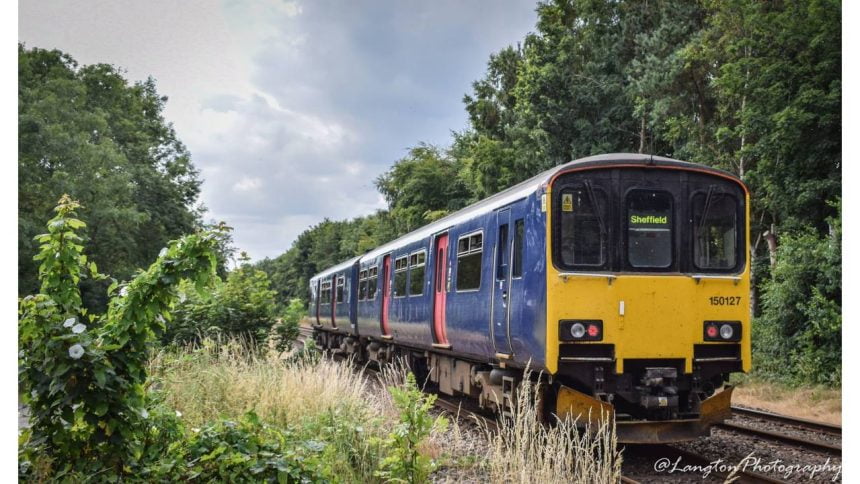This article has been updated at 14:40 on 29/11/18, please see the bottom of the article for more information
Rail Minister Andrew Jones has revealed a careful balance between safety and protecting lineside wildlife and trees is at the core of the independent Vegetation Management Review undertaken.
This comes at the launch of the first British railway hedge planting trial at Hadley Wood, by Network Rail, the Tree Council, and Hadley Wood Association and Rail User Group in Hertfordshire.
Mr. Varley has set out a number of recommendations for Network Rail to revamp its lineside operations.
This includes calling on the Department for Transport to set out clear expectations for Network Rail, and for the organisation to implement a cultural change focused on valuing nature and the environment as well as improving communication with affected communities.
Network Rail is one of the largest landowners in the UK.
Last year there were an estimated 1,500 incidents of rail disruption due to trees and bad weather.
Over the next 6 months, Network Rail will develop a plan to address the recommendations. This includes a commitment to improving the way it operates to better protect nesting birds, before next year’s nesting season.
What did the officials say?
Rail Minister Andrew Jones said:
This is a positive report and I welcome it. The thousands of miles of lineside vegetation and wildlife on our rail network are valuable assets which need protection because of the environmental benefits they bring.
So I completely understand people’s concerns when they see trees being cut down, but it’s also important to recognise that without effective lineside vegetation management we risk delays and compromise safety for passengers.
Network Rail already demonstrates good practice in many locations but it is vital this is mirrored across the network, which is why I have asked the organisation to put together a plan which addresses these issues in the next 6 months. This is about culture change across the organisation as a whole.
Review chair John Varley said:
The profile of today’s line-side vegetation is a product of the evolution of the railway over decades. If laid out end to end it would stretch over halfway around the circumference of the earth.
This is a valuable and nationally important natural asset. Taken together, my review’s recommendations should lead to a significant improvement in the environmental impact of the railway, while reducing cost, and safety and performance risks.
The time is right for Network Rail to not only be one of the safest railways in Europe, but the greenest too, by valuing nature and providing a railway for people and wildlife.
Andrew Haines, Network Rail chief executive, said:
I welcome the Varley Review, in particular the opportunity it gives Network Rail to develop an ambitious vision for increasing biodiversity on the railway. Over the next 6 months we will develop a costed plan to deliver the aims and recommendations of this report. We will also improve the way we operate to better protect nesting birds, ready for next year’s breeding season.
We are grateful to John and the team for their vision, insight and guidance.
Mike Clarke, Chief Executive, Royal Society for Protection of Birds (RSPB):
The Network Rail estate is an important national asset for biodiversity, providing vital connections for wildlife throughout the landscape. The RSPB commends the recommendations in this review as the right ones to resolve the issue of vegetation management in the bird nesting season, and, enable Network Rail to deliver a positive approach to environmental management that enhances the estate’s biodiversity, natural capital and provides a safe railway.
This article originally included in error a quote which appeared to be from the Llangollen Diesel group. This was included by mistake and was, in fact, a quote relating to this news article. We would like to apologise to the Llangollen Diesel Group for including the quote on the wrong news item. The Llangollen Diesel group have not made any comment in relation to this particular article.
Where Next?
News Homepage
For the Latest Railway News
RailAdvent Online Shop
Framed Prints, DVD’s / Blu-Ray’s and more
LocoStop – The RailAdvent Community
Come and share your railway pictures
UK Government
Visit their website
Photo: Langton Photography
Visit their website


Please note the quote from the Llangollen Diesel Group used in this article has been done so in error and relates to our announcement of our need to have to sell one of our diesel locomotives earlier this week (reported elsewhere on here).
I’d be grateful if our quote could be removed from this article as soon as possible please. Although it’s pretty clear to me that it’s in the wrong place, it is misleading. I have been contacted by a National Newspaper about it today!
Hi Tez
Thankyou for contacting us about this. Please accept our sincere apologies for this mistake. We have updated the article to confirm that the LDG has not commented on this particular news item.
Regards
Michael
As long as Network Rail can still look after railways aswell looking after nature. As both things can play a key part. Except when railway lines do close and nature takes over leaving it unattended. Including former railway tracks that have been re-transformed into public bridleways, roads and possibly reused once again.
Such as the East-West Rail link which will soon connect cities and towns such as Oxford, Milton Keynes, Bedford and Cambridge and with creating new jobs, new towns and new homes along the redeveloped railway line that was once closed in the 1960’s which was part of the Beeching Axe.